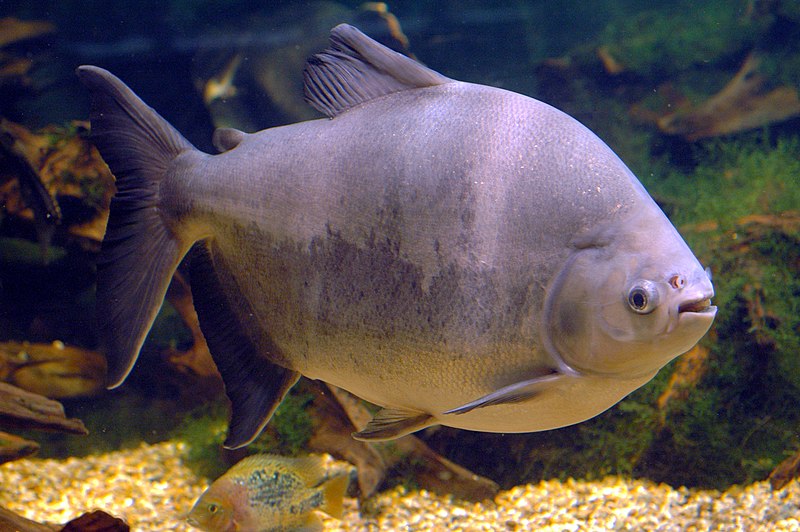 A few days ago, I came across a curious story in the aquatic news feed regarding fatalities of local swimmers/fishermen in Papua New Guinea. Though the reported fatalities occurred in 2001, the unusual events drew famous monster fish angler Jeremy Wade to Oceania to investigate and nab one of the possible culprits.
A few days ago, I came across a curious story in the aquatic news feed regarding fatalities of local swimmers/fishermen in Papua New Guinea. Though the reported fatalities occurred in 2001, the unusual events drew famous monster fish angler Jeremy Wade to Oceania to investigate and nab one of the possible culprits.
There were apparently two fatalities in 2001 during which the two men had their genitalia bitten off as they pursued their aquatic activities. Both bled to death (these were two seperate occasions) after being bitten by a mysterious, human-like predator in a remote area. As it turns out, the culprit was a large Red-bellied Pacu.
An Unlikely Attacker
You’ve likely seen Pacu in public aquariums or even in fish stores. We’ve even had several large specimens surrendered and kept in our pond display over the years. They are natives of the Amazon, large vegetarian relatives of the notorious Piranhas. Typically these behemoths wander the rivers in search of nuts, fruit and other vegetation which makes up the bulk of their natural diet. Their flat, human-like crushing teeth are their unique adaptation to penetrate the hard shells on nuts and seeds and to cut through other thick aquatic vegetation in the tropics.
The Pacu in Papua New Guinea are not native. They were introduced in the early 1990’s to supplement the island’s fishery and have since become naturalized. As their natural food items grew scarce, this pacu population adapted to the food shortage by becoming predatory. Around 1999, they started eating meaty foods like fish, and apparently parts of these unfortunate men in 2001. Some locals also blame them for depleting other fish stocks.
Pacu are generally gentle giants, at least in a captive environment. Those cared for here were happy to lumber in circles around the pond, only showing any real vigor when they were offered grapes, lettuce and other veggies. There are always exceptions, and some individuals might be aggressive towards other fish in the viciniy. Their size alone makes it easy for them to cause damage to soft tissue, whether it be other fish or human flesh, and an accidental or intentional nip may result in the loss of a chunk of skin. These fish can grow to more than 35 inches if given proper space and nutrition, and they may weigh up to 55 lb at maturity. For years they were popular offerings in pet stores. They were inexpensive and easy to come by as juveniles. Unfortunately, the young fish mature quickly and outgrow the average home aquarium.
 The wild population in Papua New Guinea appear to have taken a turn to the aggressive side. I think it is unlikely that these fish will ever swarm and consume any villager that enters the water. Even Piranhas, which were designed by nature to kill and consume, don’t rush to devour anything that enters the water. These documented incidences were more likely a case of mistaken identity by opportunistic individuals looking for anything edible, not man-eating monsters. Regardless, it may be best to take precautions if you decide to vacation in New Guinea!
The wild population in Papua New Guinea appear to have taken a turn to the aggressive side. I think it is unlikely that these fish will ever swarm and consume any villager that enters the water. Even Piranhas, which were designed by nature to kill and consume, don’t rush to devour anything that enters the water. These documented incidences were more likely a case of mistaken identity by opportunistic individuals looking for anything edible, not man-eating monsters. Regardless, it may be best to take precautions if you decide to vacation in New Guinea!
Pacu image referenced from wikipedia and originally posted by Tino Strauss
Pacu Pack image referenced from wikipedia and originally posted by David Morimoto
 That Fish Blog – Aquarium Advice and Information
That Fish Blog – Aquarium Advice and Information

